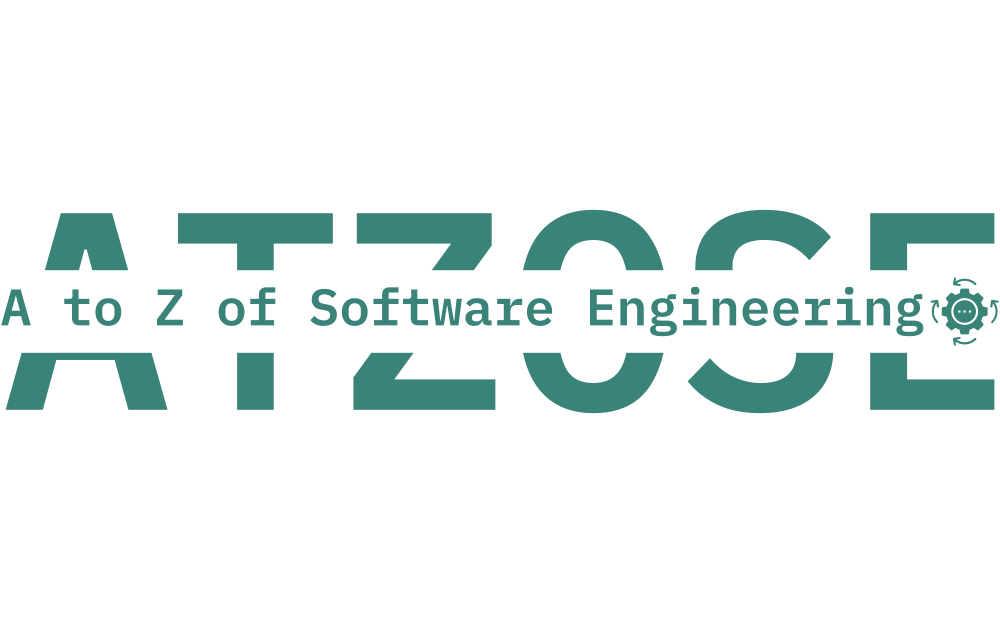Scope creep is the bane of many project managers and teams. It refers to the uncontrolled expansion or modification of a project’s scope, often leading to increased costs, missed deadlines, and frustrated stakeholders. Managing scope creep is a crucial aspect of project management, and it requires a combination of proactive planning, effective communication, and well-established methods to keep projects on track. In this article, we’ll explore some time-tested methods to effectively manage scope creep.
Clear Project Definition
The foundation of effective scope management lies in the ability to establish and maintain a clear and well-defined project scope. When embarking on any project, it is essential to establish the objectives, deliverables, boundaries, and constraints that will guide its execution. This process is typically documented in a project scope statement, which serves as a crucial reference point throughout the project’s lifecycle.
The project scope statement outlines the project’s goals, the specific features or functionalities to be developed, and any unique requirements. It also defines what is considered in -scope or out-of-scope for the project, ensuring that the project team and stakeholders have a shared understanding of the project’s boundaries. By clearly defining the scope at the outset, you can minimize the risk of scope creep, which refers to the uncontrolled expansion of project scope beyond what was originally planned.
Regularly reviewing and updating the project scope statement is vital to manage any changes that may arise during the project. As the project progresses, there may be a need to tweak or refine the scope in response to new information, stakeholder feedback, or evolving business needs. By keeping the scope statement up to date, you ensure that everyone involved in the project stays aligned and can make informed decisions based on the defined scope.
Effective scope management is crucial for project success. It helps in setting realistic expectations, managing resources efficiently, and delivering the desired outcomes on time and within budget. By diligently managing the project scope, you can enhance project control, minimize risks, and ensure that the final deliverables meet the stakeholders’ requirements.
Remember, the project scope is a living document that should be revisited and refined throughout the project’s life cycle. This iterative approach to scope management allows for flexibility while maintaining a clear focus on the project’s objectives and deliverables.
Engage Stakeholders
Engaging stakeholders from the beginning is crucial to successful scope management. When it comes to any project, regardless of its size or complexity, it is essential to identify the key stakeholders and involve them right from the planning stage. By including stakeholders in the decision-making processes, you can ensure that their opinions, concerns, and requirements are taken into account, which ultimately leads to a smoother and more efficient project execution.
One of the most effective ways to engage stakeholders is through regular and transparent communication. By keeping the lines of communication open, you can establish a rapport with stakeholders and create an environment where expectations can be clearly set and managed. Regular updates and progress reports enable stakeholders to stay informed about the project’s status, ensuring that everyone is on the same page.
Moreover, involving stakeholders in the early stages of the project allows for early identification of potential issues or risks. By seeking their input and feedback, you can tap into their expertise and experience, which may uncover insights that were previously unexplored. This collaborative approach not only mitigates risks but also fosters a sense of ownership and buy-in from stakeholders, enhancing their commitment and support throughout the project lifecycle.
Additionally, engaging stakeholders from the beginning helps in addressing any changes or additional requirements that may arise during the course of the project. By having stakeholders involved in the planning phase, you can anticipate their potential needs and accommodate them more effectively. This proactive approach minimizes the chances of scope creep and ensures that the project stays aligned with the stakeholders’ goals and expectations.
Therefore, engaging stakeholders from the outset of a project is critical. By involving them in the planning and decision-making processes, maintaining regular communication, and considering their input, you can effectively manage the project scope, establish realistic expectations, and foster a collaborative and conducive environment for project success.
Change Control Procedures
Establishing robust change control procedures is vital for managing scope creep effectively within a project. It is crucial to develop a formal process that provides guidelines and protocols for documenting, evaluating, and addressing requested changes to the project scope. By implementing a well-defined change control procedure, you can maintain clarity and stability in project deliverables while mitigating potential risks and challenges.
The change control process begins with the proper documentation of all requested changes. This includes capturing detailed information such as the nature of the change, its impact, and its potential benefits or drawbacks. These details allow the project team to have a comprehensive understanding of the suggested alteration and assess its potential implications on project scope, timeline, resources, and budget.
Once the change request is documented, it should go through a structured evaluation process. This evaluation involves analyzing the proposed change in terms of feasibility and compatibility with the project’s objectives and constraints. It may also require collaboration with relevant stakeholders, subject matter experts, or other project team members to gather diverse perspectives and insights.
During the evaluation, it is essential to consider the potential impact of the requested change on other project elements. This includes assessing potential ripple effects on dependencies, risks, and resource allocation. By thoroughly analyzing the implications of the change, you can determine its feasibility and make informed decisions about whether to approve, reject, or modify the request.
To ensure a transparent and effective change control process, it is crucial to establish a clear approval mechanism. This typically involves engaging the project sponsor or other relevant decision-makers who possess the authority to endorse or reject the proposed change. The approval mechanism should consider factors such as the significance of the change, its alignment with the project objectives, and the available project resources.
Once approved, the change should be integrated into the project’s baseline and communicated to all relevant stakeholders. This ensures that everyone involved in the project is aware of the modified scope and can make necessary adjustments to their work or plans.
Therefore, a well-established change control procedure plays a pivotal role in successfully managing scope creep. By implementing a structured approach to documenting, evaluating, and approving requested changes, project teams can maintain control over project scope, effectively address deviations, and increase the likelihood of project success.
Define Project Milestones
Breaking the project down into milestones can greatly benefit the overall success and efficiency of a project. By dividing the project into smaller, manageable segments or milestones, it becomes easier to track progress and stay on schedule. Each milestone should have clearly defined objectives, tasks, and deadlines, ensuring that everyone involved in the project is aware of their responsibilities and the timeline for completion.
Furthermore, adopting a milestone-based approach allows for better scope management. As each milestone is completed, it presents an opportunity to reassess the project’s scope and make necessary adjustments. This can help identify and address potential scope creep early on, minimizing the risks of budget overruns, schedule delays, and team burnout. By regularly evaluating the project’s scope, you can ensure that it stays aligned with the original goals and objectives.
Additionally, milestones provide a sense of achievement and motivation as progress is made. Successfully completing each milestone not only allows for a moment of celebration but also provides a clear indication that the project is moving forward. This can boost team morale and maintain momentum throughout the project lifecycle.
Therefore, breaking a project down into milestones provides a clear roadmap for progress, enhances scope management, and fosters a sense of accomplishment. It is a valuable strategy that can contribute to a project’s success, ensuring that it stays on track, meets its objectives, and delivers results in a timely manner.
Regular Progress Tracking
Regularly tracking project progress against the project plan is crucial to ensure effective scope management. By utilizing dedicated project management software or tools, you can easily monitor tasks, timelines, and resource allocation. These tools allow you to accurately measure the team’s progress and identify any deviations from the original plan.
When such deviations occur, it is important to promptly investigate and determine their root causes. This analysis will help you understand whether the changes are a result of scope creep, where project requirements are expanding beyond the initial agreed-upon scope, or if there are other underlying issues at play.
By actively monitoring project progress and promptly addressing any deviations, you can proactively manage scope changes and ensure that the project stays on track. This will help you avoid potential delays, budget overruns, and dissatisfaction from stakeholders.
Remember, effective scope management is a cornerstone of successful project execution. So, be diligent in tracking progress, analyzing any variations, and taking appropriate actions to maintain project scope integrity.
Risk Assessment and Mitigation
When embarking on a new project, it is crucial to conduct a comprehensive risk assessment. By thoroughly assessing the potential risks and challenges at the project’s outset, you gain insights into the various factors that can lead to scope creep. Scope creep refers to the gradual expansion of a project’s goals and deliverables beyond its original scope, often resulting in budget overruns, timeline delays, and resource misalignment.
During the risk assessment process, it is essential to identify and analyze the potential sources of scope creep. These sources can range from evolving client requirements and changing market dynamics to unexpected technical difficulties or unforeseen external factors. Taking a proactive approach, project teams can brainstorm and anticipate potential risks and work towards developing effective mitigation strategies.
It’s important to remember that risk assessment is not a one-time activity. As the project progresses, new risks may arise, and existing risks may evolve. Therefore, it is crucial to periodically review and update the risk assessment to stay ahead of emerging issues.
Incorporating the risk assessment findings into your project plan and workflow can significantly minimize the impact of scope creep. By integrating risk mitigation strategies into the project plan, you can effectively manage and control any potential threats to the project’s success. This includes establishing clear communication channels, setting up proper change management procedures, and regularly monitoring key project indicators.
Moreover, maintaining open lines of communication between stakeholders, project managers, and team members is essential. This ensures that any potential risks or changes in project scope are promptly addressed, minimizing the chances of scope creep.
By conducting a thorough risk assessment and implementing proactive risk mitigation strategies, you can enhance the overall project management process and increase the likelihood of successful project outcomes. Regularly monitoring and updating the risk assessment ensures that your project remains on track and aligned with the evolving needs and circumstances.
So remember, invest time and effort upfront to conduct a comprehensive risk assessment, integrate risk mitigation strategies into your project plan, and continuously review and update the risk assessment as your project progresses. This proactive approach will help you keep scope creep at bay and ensure a smoother project execution.
Documentation and Reporting
Maintain comprehensive project documentation is crucial for the success of any project. This involves not only documenting meeting minutes but also keeping a record of change requests and communication logs. By documenting all project-related activities, you ensure that there is a paper trail of decisions made and discussions had, which can prove invaluable in the long run.
Creating regular project status reports is another important aspect of maintaining comprehensive project documentation. These reports serve as a snapshot of the project’s progress and can help identify any changes in scope or potential scope creep. By regularly updating stakeholders on the project’s status, you keep them informed and engaged in the scope management process.
Transparent reporting is key when it comes to scope management. By openly sharing information about any changes or potential deviations from the original plan, you foster a culture of trust and collaboration. This allows stakeholders to make informed decisions and provide valuable input to ensure the project stays on track.
Therefore, maintaining comprehensive project documentation, creating regular project status reports, and practicing transparent reporting are essential elements of successful scope management. By following these practices, you can effectively manage project scope, keep stakeholders informed, and mitigate potential risks or issues that may arise during the project lifecycle.
Prioritization
Understanding the importance of effectively managing scope changes is vital in any project. In order to ensure that your project stays on track, it is essential to prioritize the various additions or modifications to the project scope. By evaluating the impact of each change on the project’s objectives, timeline, and budget, you can make informed decisions and allocate resources effectively.
One way to prioritize scope changes is by using a prioritization matrix. This matrix allows you to systematically assess the significance of each requested change, enabling you to allocate your time and resources wisely. The matrix typically consists of criteria such as the potential impact on project deliverables, the urgency of the change, and the level of effort required for implementation. By assigning scores or weights to these criteria, you can objectively prioritize the changes based on their overall importance.
Another approach to prioritizing scope changes is to categorize them into different levels of importance. For instance, you could classify changes as either high priority, medium priority, or low priority. High-priority changes are those that directly impact the project’s objectives and require immediate attention. Medium-priority changes have a moderate impact and can be addressed after handling high-priority ones, while low-priority changes have minimal impact and can be considered at a later stage, if at all.
Remember that effective communication with stakeholders is essential throughout this process. Keeping stakeholders informed about the impact of scope changes and involving them in the prioritization process can help manage expectations and ensure that everyone is aligned with the project’s goals.
In summary, prioritizing scope changes based on their impact on objectives, timeline, and budget is crucial for successful project management. Using tools such as prioritization matrices and categorization can help you allocate resources effectively and make informed decisions. Regular communication with stakeholders will ensure transparency and alignment throughout the process.
Educate the Team
Scope creep is a common challenge in project management that can have disastrous consequences if not effectively managed. It refers to the gradual expansion of a project’s goals, requirements, and deliverables beyond what was originally defined. This uncontrolled growth can result in missed deadlines, budget overruns, and a decrease in overall project quality.
To mitigate the risks associated with scope creep, it is crucial to establish clear project objectives and requirements from the beginning. This includes having well-defined project documentation, such as a project charter and a detailed scope statement. These documents serve as a reference point and help stakeholders understand the boundaries and limitations of the project.
Additionally, regular communication and collaboration among team members are vital in preventing scope creep. By fostering a culture of open dialogue, team members can share any concerns or ideas that may impact the project scope. This ensures that all stakeholders are on the same page and can collectively make informed decisions regarding scope changes.
Moreover, it is essential to implement a robust change control process. This process involves evaluating and approving any proposed changes to the project scope. It allows for a thorough analysis of the potential impacts, such as time, cost, and resource requirements, before incorporating any changes. By diligently following this process, project managers can have greater control over scope changes and minimize the negative effects of scope creep.
Lastly, ensure that your project team is well-informed about the risks and consequences of scope creep. Train them to recognize the signs of scope creep and encourage them to communicate any potential issues promptly. A well-educated team is more likely to be proactive in scope management.
By implementing these strategies, project managers can effectively tackle scope creep and maintain the success of their projects. Remember, proactive scope management is the key to delivering projects on time, within budget, and with the expected level of quality.
Review Lessons Learned
When you wrap up a project, it’s essential to conduct a comprehensive lessons-learned session with your team and stakeholders. This post-project assessment allows you to delve deeper into the project’s overall performance and identify key areas for improvement. By analyzing what went well and where scope creep occurred, you can gain valuable insights into the strengths and weaknesses of your scope management processes.
During the session, encourage open and honest communication among all participants, fostering an environment where everyone feels comfortable sharing their experiences and opinions. Reflect on the project’s objectives, deliverables, and timelines, and gather feedback about the various stages and milestones. Explore whether the project met the initial scope and if any modifications or change requests affected its trajectory.
As you delve into the lessons learned, pay attention to the positive aspects that contributed to the project’s success. These could include effective communication channels, strong collaboration, or the implementation of innovative solutions. Identify these best practices and consider integrating them into your future projects to enhance overall efficiency and productivity.
Simultaneously, it’s equally important to acknowledge and address any challenges or scope deviations encountered throughout the project. Scope creep refers to the uncontrolled expansion of project scope beyond its original boundaries. By analyzing where and why scope creep occurred, you can identify the underlying causes and implement strategies to prevent or manage it effectively in future endeavors. This could involve establishing better change control procedures, enhancing stakeholder engagement, or refining scope documentation processes.
Documenting these lessons learned is crucial to ensure that the knowledge and experiences gained from each project are captured for future reference. Create a comprehensive report summarizing the insights, findings, and recommendations identified during the lessons-learned session. Make this document easily accessible to the project team, stakeholders, and anyone involved in similar projects within your organization. This way, you can foster a continuous learning environment and continuously improve your scope management practices.
Remember, the key to successful projects lies not only in the final deliverables but also in the knowledge gained throughout the process. By conducting thorough lessons-learned sessions, you equip yourself and your team with valuable insights that can positively impact future endeavors. Embrace this opportunity for growth, and let the lessons learned propel you towards even greater success!
Conclusion
Scope creep is a common challenge in project management, but it’s not insurmountable. By implementing these time-tested methods, you can effectively manage and mitigate scope creep throughout your projects. A combination of clear project definition, stakeholder engagement, change control procedures, and diligent project management can help keep scope creep at bay and ensure the successful completion of your projects, on time and within budget. Remember, proactive scope management is a cornerstone of project success.
Please do not forget to subscribe to our posts at www.AToZOfSoftwareEngineering.blog.
Follow our podcasts and videos available on YouTube, Spotify, and other popular platforms.
Have a great reading, viewing, and listening experience!





























Leave a comment